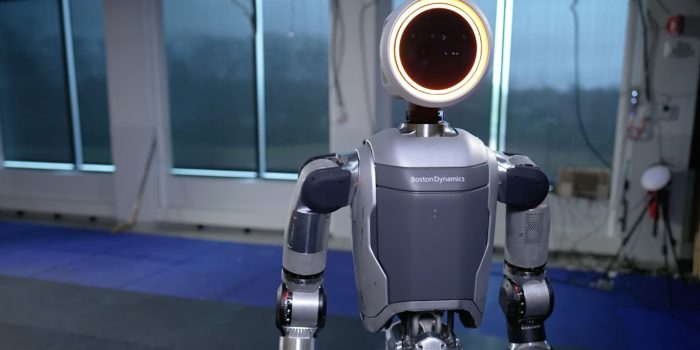This week, Boston Dynamics made ripples in the robotics industry. The business revealed its brand-new, all-electric Atlas robot following the announcement of the renowned hydraulic robot’s retirement. Excitement and caution are raised by the possibility of a major jump in mobility with this next-generation Atlas.
The core of the new Atlas lies in its redesigned swiveling joints. Boston Dynamics claims these joints grant the robot unparalleled agility, making it ideal for “dull, dirty, and dangerous tasks.” A recently released teaser video showcases this agility, but in a way that’s more unsettling than impressive. We see Atlas rise from a lifeless position, its body contorting in ways both unnerving and strangely graceful, reminiscent of a scene from a science fiction horror film.
Despite its initial creep factor, the new Atlas boasts several improvements. This electric iteration is stronger, more dexterous, and completely cable-free. The design itself leans more humanoid, with elongated limbs, a straighter posture, and a distinct swiveling head. Boston Dynamics has also equipped this Atlas with their latest advancements in AI and machine learning.
However, while the company emphasizes Atlas’ potential for industrial applications, its movements spark a sense of unease. This isn’t the only humanoid robot turning heads. Similar creations from Tesla and other companies are undergoing testing in production lines, painting a picture of a future where robots are commonplace on factory floors.

The question remains: is the new Atlas a savior for industry or a soulless shell from a dystopian nightmare? Only time will tell if these agile machines become valuable industrial partners or something more unsettling. Boston Dynamics plans to test the new Atlas with a select group of customers, including Hyundai, over the next few years. As these tests unfold, we’ll gain a clearer picture of how these machines will integrate into our world and whether they’ll usher in a new era of robotic collaboration or solidify our fears of a mechanized future.


